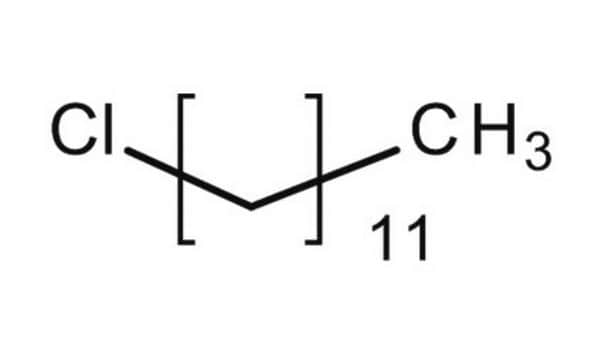371696
Tetrachlorethen
anhydrous, ≥99%
Synonym(e):
Ethylentetrachlorid, PCE
About This Item
Empfohlene Produkte
Qualität
anhydrous
Qualitätsniveau
Dampfdichte
5.83 (vs air)
Dampfdruck
13 mmHg ( 20 °C)
19 mmHg ( 25 °C)
Assay
≥99%
Form
liquid
Methode(n)
FTIR: suitable
Verunreinigungen
<0.002% water
<0.005% water (100 mL pkg)
Abdampfrückstand
<0.0005%
Brechungsindex
n20/D 1.505 (lit.)
bp
121 °C (lit.)
mp (Schmelzpunkt)
−22 °C (lit.)
Löslichkeit
water: soluble 0.15 g/L at 25 °C
Dichte
1.623 g/mL at 25 °C (lit.)
SMILES String
Cl\C(Cl)=C(\Cl)Cl
InChI
1S/C2Cl4/c3-1(4)2(5)6
InChIKey
CYTYCFOTNPOANT-UHFFFAOYSA-N
Suchen Sie nach ähnlichen Produkten? Aufrufen Leitfaden zum Produktvergleich
Verwandte Kategorien
Allgemeine Beschreibung
Anwendung
Signalwort
Warning
Gefahreneinstufungen
Aquatic Chronic 2 - Carc. 2 - Eye Irrit. 2 - Skin Irrit. 2 - Skin Sens. 1 - STOT SE 3
Zielorgane
Respiratory system
Lagerklassenschlüssel
6.1C - Combustible acute toxic Cat.3 / toxic compounds or compounds which causing chronic effects
WGK
WGK 3
Flammpunkt (°F)
No data available
Flammpunkt (°C)
No data available
Persönliche Schutzausrüstung
Eyeshields, Gloves, type ABEK (EN14387) respirator filter
Choose from one of the most recent versions:
Besitzen Sie dieses Produkt bereits?
In der Dokumentenbibliothek finden Sie die Dokumentation zu den Produkten, die Sie kürzlich erworben haben.
Kunden haben sich ebenfalls angesehen
Unser Team von Wissenschaftlern verfügt über Erfahrung in allen Forschungsbereichen einschließlich Life Science, Materialwissenschaften, chemischer Synthese, Chromatographie, Analytik und vielen mehr..
Setzen Sie sich mit dem technischen Dienst in Verbindung.











